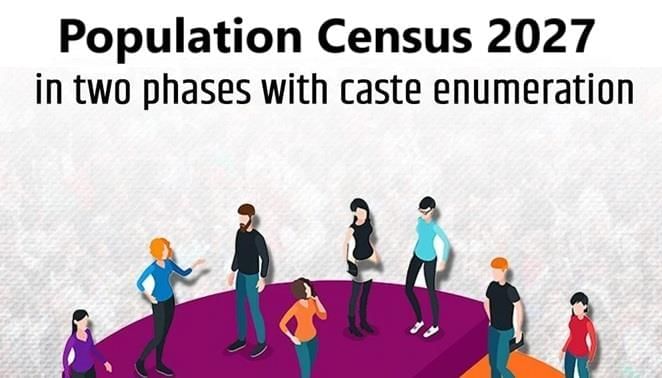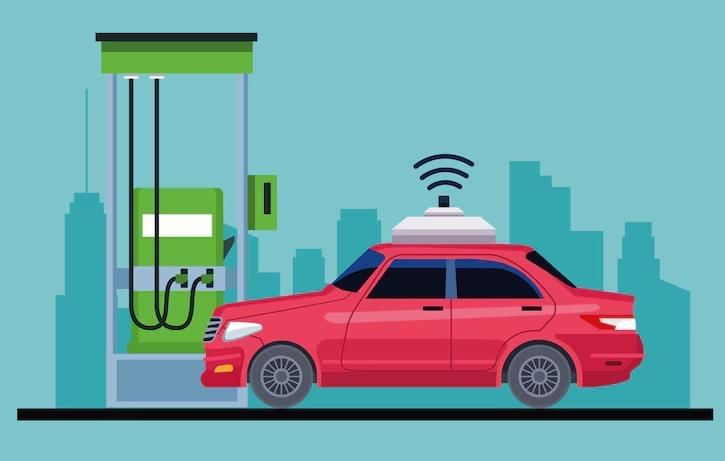UPSC Exam > UPSC Notes > PIB (Press Information Bureau) Summary > PIB Summary - 5th June 2025
PIB Summary - 5th June 2025 | PIB (Press Information Bureau) Summary - UPSC PDF Download
Population Census-2027 to be conducted in two phases along with enumeration of castes
 Population Census-2027: Key Highlights
Population Census-2027: Key Highlights
- Phased Approach: The census will be conducted in two phases, similar to previous census models.
- Caste Enumeration: For the first time, caste enumeration will be carried out alongside the population census. This inclusion addresses long-standing debates about the need for detailed caste data.
Reference Dates
- Most of India: 00:00 hours, 1st March 2027
- Snow-bound/Non-synchronous Areas: 00:00 hours, 1st October 2026
This includes regions like Ladakh, Jammu & Kashmir, Himachal Pradesh, and Uttarakhand.
Legal Framework
- The census is conducted under the Census Act of 1948 and the Census Rules of 1990.
- A notification indicating the intent to conduct the census, along with the reference dates, is expected to be published in the Official Gazette on 16 June 2025 (tentative). This is based on Section 3 of the Census Act, 1948.
Historical Context
- The last completed census was in 2011, which involved:
- Phase I: House Listing (April to September 2010)
- Phase II: Population Enumeration (February 9 to 28, 2011)
- The reference date for the 2011 census was 1st March 2011, with exceptions for snow-bound areas where it was 1st October 2010.
- The Census 2021 was planned similarly but was postponed due to the COVID-19 pandemic, with fieldwork originally scheduled to begin on April 1, 2020.
Significance of Caste Enumeration
- The inclusion of caste enumeration marks a significant policy shift. Previously, caste data was limited to the Socio-Economic and Caste Census (SECC), last conducted in 2011.
- This will provide updated caste data essential for formulating social welfare and affirmative action policies.
- The updated caste data could influence various aspects such as:
- Reservation Policy Reforms: Informing changes in reservation policies based on current caste demographics.
- Targeted Development Programs: Assisting in the design of development programs aimed at specific caste groups.
- Data-Backed Policy Planning: Enabling more effective and evidence-based policy planning.
Administrative & Policy Implications
- The census will require extensive logistical preparation, potentially involving the use of digital tools and trained manpower.
- It is expected to aid in better socio-economic planning in the aftermath of the pandemic.
- The inclusion of caste data could reignite discussions on caste-based reservation and the allocation of resources based on caste.
CAQM Mandates Cleaner Mobility for Aggregators and E-Commerce Entities Across NCR

Context: Air Pollution from Transport Sector
- The transport sector is a major contributor to air pollution in Delhi-NCR throughout the year, with its impact worsening during the winter months.
- Commercial vehicles are particularly harmful due to factors such as high mileage, overloading, and poor maintenance.
Push for E-Mobility in Commercial Services
- Delhi has introduced the Delhi Motor Vehicle Aggregator and Delivery Service Provider Scheme, 2023, which aims to promote e-mobility in commercial fleets by licensing aggregators in passenger and goods transport, including e-commerce deliveries.
- Other states in the NCR region, including Haryana, Uttar Pradesh, and Rajasthan, have been directed to implement similar policies focusing on motor vehicle aggregators, delivery services, and e-commerce platforms, with a particular emphasis on cities with high vehicle density and pollution levels, such as Gurugram, Faridabad, Sonipat, Noida, Greater Noida, and Ghaziabad.
CAQM Mandates (Effective 1st Jan 2026)
- CNG/Electric 3-Wheelers: Only CNG or electric 3-wheelers can be newly inducted into aggregator and delivery fleets.
- Prohibition of New Petrol/Diesel Vehicles: No new petrol or diesel 2-wheelers, 4-wheeler light commercial vehicles (LCVs), or 4-wheeler light goods vehicles (LGVs) under the N1 category (up to 3.5 tonnes) are allowed to be added to these fleets.
- Existing Internal Combustion Engine (ICE) Vehicles: Existing ICE vehicles are permitted to continue their operations.
Compliance & Monitoring
- NCR states are required to ensure strict compliance among all aggregators, delivery, and e-commerce entities with the new mandates.
- Dedicated web portals for monitoring compliance need to be created, similar to the one already developed by Delhi.
- There should be wide publicity and awareness campaigns to inform stakeholders about the new regulations.
Significance
- The new mandates aim to reduce vehicular emissions, particularly in high-traffic urban areas, supporting the broader goals of the National Electric Mobility Mission and air quality improvement under the CAQM mandate.
- This initiative could set a national precedent for promoting clean commercial mobility in urban India.
The document PIB Summary - 5th June 2025 | PIB (Press Information Bureau) Summary - UPSC is a part of the UPSC Course PIB (Press Information Bureau) Summary.
All you need of UPSC at this link: UPSC
FAQs on PIB Summary - 5th June 2025 - PIB (Press Information Bureau) Summary - UPSC
| 1. What are the two phases of the Population Census-2027? |  |
Ans. The Population Census-2027 will be conducted in two distinct phases. The first phase will likely involve the preparation and collection of preliminary data, while the second phase will focus on detailed enumeration, including demographic and socio-economic data. This structured approach aims to ensure a comprehensive understanding of the population and its characteristics.
| 2. Why is the enumeration of castes included in the Population Census-2027? |  |
Ans. The enumeration of castes in the Population Census-2027 is intended to gather data on the diverse social groups within the population. This information is crucial for understanding social dynamics, planning development initiatives, and ensuring equitable distribution of resources and opportunities among different communities.
| 3. What initiatives are being taken for cleaner mobility across the NCR for aggregators and e-commerce entities? |  |
Ans. The initiatives for cleaner mobility across the National Capital Region (NCR) aim to reduce pollution and improve air quality. This includes mandating the use of electric vehicles and promoting public transportation. Aggregators and e-commerce entities are encouraged to adopt sustainable practices, such as optimizing delivery routes and using eco-friendly vehicles to minimize their carbon footprint.
| 4. How does cleaner mobility impact the environment in urban areas? |  |
Ans. Cleaner mobility significantly impacts the environment by reducing greenhouse gas emissions, decreasing air pollution, and promoting sustainable urban transport systems. This results in improved public health, enhanced quality of life, and contributes to the overall sustainability goals of urban areas, making them more livable for residents.
| 5. What role does the Central Air Quality Management (CAQM) play in promoting cleaner mobility? |  |
Ans. The Central Air Quality Management (CAQM) plays a crucial role in promoting cleaner mobility by setting regulations and standards for air quality management in urban areas. It collaborates with various stakeholders, including government agencies, businesses, and the public, to implement policies that encourage the use of cleaner technologies and reduce vehicular emissions, thereby fostering a healthier environment.
Related Searches
















